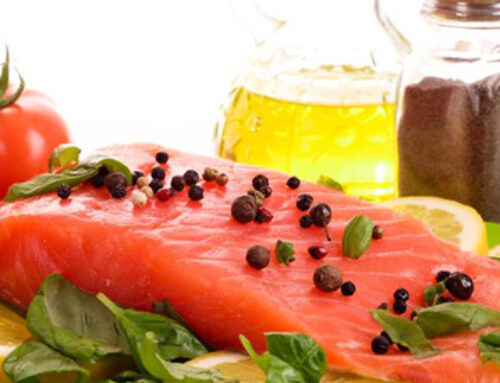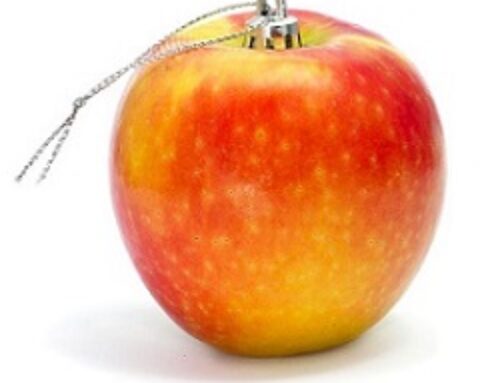In this article, after returning from a trip to France, I reflect on the remarkable European food system and how the U.S. industrial food system often falls short.
Sometimes it takes a trip to another country to gain some perspective about our food system. I’m referring to the quality of life and true joy that comes with having access to real, unprocessed, clean, healthy food that is available in most of Europe.
The U.S. food system is morally bankrupt and run by corporations that are most concerned about their bottom line and not interested in the fact that they are promoting products that contribute to your poor health. Corporations promote the foods they manufacture to the people of this country with such deftness that most people have no idea they are consuming an engineered product that has literally no nutritional value. It might taste great to you, but that is engineered too. The flavor industry cleverly devises millions of chemicals so you can bite into a Dorito and taste a taco, fried chicken or even a hamburger instead. This is dangerous, as the food we eat becomes less and less like real food. Of course, these tempting and tasty food products contribute to the excess weight gain and disease so many Americans live with every day. And, the ironic part is that we pay the food industry to sell us these food-like products, while the food industry becomes more powerful and accumulates more wealth. A golden industry indeed!
The corporate food industry has been pushing small farmers out of business for decades. The goal is to have all the food grown in the U.S. controlled by giant, industrial farms. The biodiversity that is part of the small farm model will become extinct. This allows powerful food corporations to grow enormous swaths of one crop—usually GMO corn and soy (90% of corn grown in the US is GMO, 92% of soy is GMO). Who is eating all this corn and soy? A lot goes into cattle feed (which is not good for cattle, whose stomachs are designed to digest grass), and a lot is used in the processed foods we consume every day (corn chips, snack foods, tortillas, corn syrup, corn starch, soy, and the less obvious ones like soy protein isolate, dextrose, monosodium glutamate, etc.). Because we are so far removed from the source of our foods, it is difficult to realize just how destructive our food choices can be. This is ideal for the food industry, because the further removed we are from our food, the less likely we are to understand the complex processes that are involved in creating it and the more likely we are to accept that dinosaur-shaped chicken nuggets, unicorn-colored Frappuccino’s and hamburger-flavored chips are ordinary and acceptable things to consume.
When thousands of acres are planted with a single crop, biodiversity is destroyed. These genetically engineered crops require farmers to apply millions of tons of toxic sprays to grow, which decimates the environment even further, and then we consume these crops, along with glyphosate and other toxic spray residue. The processed and packaged foods we eat in the form of processed cereals, processed breads and soy foods promoted as a healthy alternative to animal foods for vegetarians and vegans contain toxins that slowly but surely degrade our health.
I estimate that by far, most of the sickness we are seeing today is due to varying degrees of malnutrition. The word “malnutrition” is typically associated with starving children in third world countries, but many, many people in developed countries are truly malnourished. The most common presentation of this condition is over–nutrition (obesity). We also see an alarming number of nutrient deficiencies in America, as well as brittle bones, poor dentition, and early onset puberty. These issues (and many others) occur when people are malnourished and consume mostly processed, fatty and sweet foods rather than a balanced, nutrient-rich diet coupled with regular physical activity. An estimated 76% of Americans do not meet the FDA’s fruit intake recommendations (2 cups per day) and 87% do not meet vegetable intake recommendations (2.5 cups per day) (1). These alarming statistics explain, in part, why our country is so sick.
I recently returned from a trip to France and was astounded at the difference in the way the French culture views food. Some of the most notable differences: I was hard pressed to find a fast food joint in Paris (I saw just one in two weeks). Fast food is not popular there. And no wonder, for a country who considers food to be one of their national treasures, fast food just isn’t regularly consumed. My friend and guide Henri explained that no Frenchman would eat the fast food served in America, so even the fast food in France is fresher and more nutritious than that found here.
You may not find many fast food restaurants in France but you will find small markets with lots of fresh vegetables, fruits, and fresh meats available all the time from local farms. Something that is very important to me is finding grass-fed and grass-finished meats here in the states. In France, all the meat is grass-fed as they don’t have industrial farming. There are no stock yards to fatten livestock with antibiotics and they don’t put estrogen pellets in their cattle’s ears. Estrogen makes cows grow fat faster, and that means they go to slaughter faster and that equates to more money. Unfortunately, we get the excess estrogen in the animal when we consume their meat. This is something that contributes to hormonal imbalances in both sexes. This exogenous form of estrogen over time will drive down testosterone levels in men, which can be seen as feminizing in men with rounder, softer curves, and feminine cancers in women.
Many of the countries in Europe don’t want our beef—in fact, they consider it toxic. And they also don’t want our GMO foods. If there is a product that has genetically modified organisms (GMOs) in it, it must be labeled as such for the European market. Our government has made it nearly impossible for us to know if the food we consume has GMO ingredients in it, even though studies show that 90 percent of our population would like to know what is in their food, or if the food is actually a GMO (2, 3). We have been told over and over that GMOs are no different than non-GMO/organically grown produce, but more and more the science is saying that is absolutely not true. I think you might all agree the lack of transparency just tells us they must have something to hide.
Unlike the U.S., most apartments in France have very small refrigerators and the culture is to stop on the way home from work (very often while walking) for fresh produce. Most people do not buy enough food to last a whole week or longer, like we do in America, or cram the extras into the freezer. This guarantees extremely flavorful and fresh, local produce, picked often within the last day or two, which results in incredible flavor and freshness and, of course, optimal nutrition.
I can tell you firsthand that the food culture in France is nothing like our food culture here. There is pride in creating simple, flavorful meals and allowing the complex flavors of the foods to be the focus. The French enjoy their food fully and do not use it as a belly filler as we do here. Never have I tasted such incredibly intense flavors of foods that are so rich with nutrients. Because of the high nutrient levels and careful production methods, the flavors are so much more intense than the produce available in our country. Chemical fertilizers cannot give plants the complex flavors that natural, organic nutrients in the soil can give. It all comes out in the taste. I think many more people would become connected to delicious, healthy foods and skilled in their preparation if they knew just how delicious and satiating food could really be. If we turned to a more do-it-yourself style of feeding ourselves, we would see far fewer people with chronic illness. With less sickness and disease, the result might be that even the politicians in Washington could come to an agreement about health care, and the energy used for infighting could be used for something more important, like climate change or cleaning up the toxins in our environment which also contribute to our epidemic sickness here in the U.S. Okay, I am a dreamer…
But in reality, if we demand quality foods from our markets, the markets will move to provide it. Grocery stores want to sell you what you want to buy; the problem has been that we often demand substandard and cheap when it comes to our food. Unfortunately, substandard has a price and it is our health. We see it in the form of increases in cancer, obesity, heart disease, depression, and all the rest of the diseases that are close to bankrupting our health care. The best insurance is to make sure you are doing the things that foster health, and diet is at the top of the list. It must come first.
Cited References:
- Moore L, Thompson F. Adults meeting fruit and vegetable intake recommendations – United States, 2013. Centers for Disease Control and Prevention. July 10, 2015.
- Center for Food Safety, U.S. Polls on GE Food Labeling. The Mellman Group, Inc., November 23, 2015; Consumer Reports, June 9, 2014; The New York Times, July 27, 2013. Available here. Accessed July 2017.
- Jalonick, Mary Clare. Polls find most Americans want GMO food labels, Associated Press, January 13, 2015. Available here. Accessed July 2017.










